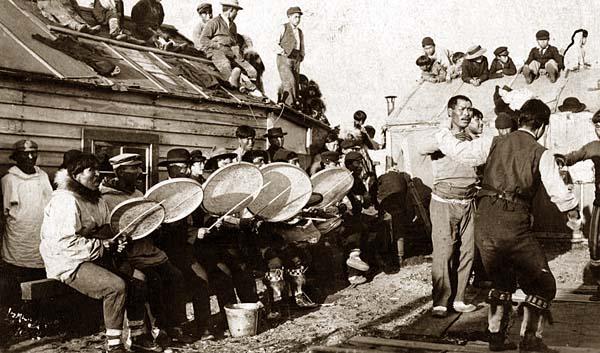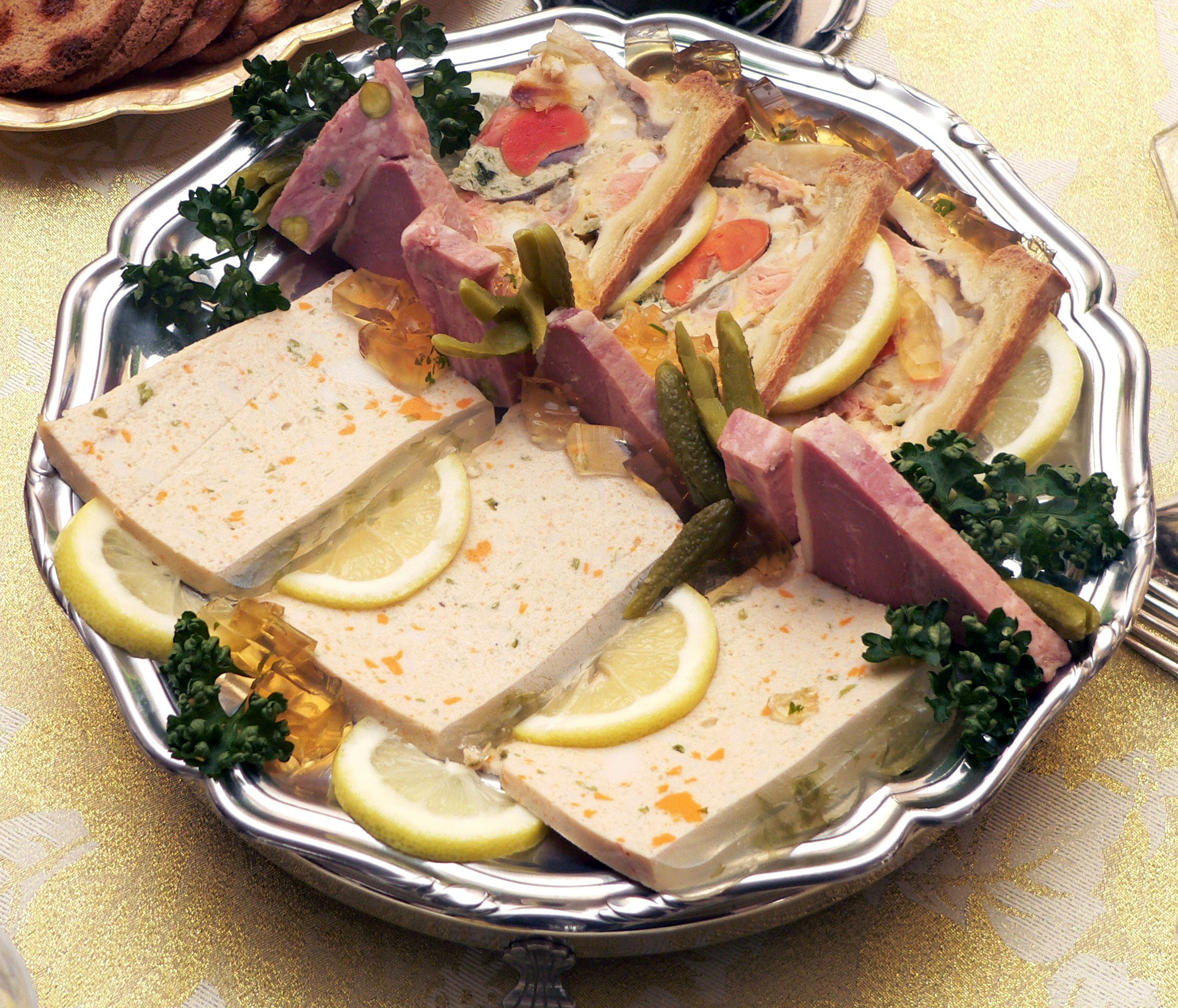|
Piblokto
Piblokto, also known as pibloktoq and Arctic hysteria, is a condition most commonly appearing in Inughuit (Northwest Greenlandic Inuit) societies living within the Arctic Circle. Piblokto is a culture-specific hysterical reaction in Inuit, especially women, who may perform irrational or dangerous acts, followed by amnesia for the event. Piblokto may be linked to repression of the personality of Inuit women. The condition appears most commonly in winter. It is considered to be a form of a culture-bound syndrome, although more recent studies (see ''Skepticism'' section) question whether it exists at all. Piblokto is also part of the glossary of cultural bound syndromes found in the Diagnostic and Statistical Manual of Mental Disorders (DSM-IV). History Piblokto was first documented in 1892 and reports by European explorers describe the phenomenon as common to all Arctic regions. Explorers were the first to record piblokto in writing. Among these, Admiral Robert Peary provided a det ... [...More Info...] [...Related Items...] OR: [Wikipedia] [Google] [Baidu] |
Culture-bound Syndromes
In medicine and medical anthropology, a culture-bound syndrome, culture-specific syndrome, or folk illness is a combination of psychiatric and somatic symptoms that are considered to be a recognizable disease only within a specific society or culture. There are no known objective biochemical or structural alterations of organ (anatomy), body organs or functions, and the disease is not recognized in other cultures. The term ''culture-bound syndrome'' was included in the fourth version of the ''Diagnostic and Statistical Manual of Mental Disorders'' (American Psychiatric Association, 1994), which also includes a list of the most common culture-bound conditions (DSM-IV: Appendix I). Its counterpart in the framework of ICD-10 (Chapter V) is the ''culture-specific disorders'' defined in Annex 2 of the ''Diagnostic criteria for research''. [...More Info...] [...Related Items...] OR: [Wikipedia] [Google] [Baidu] |
Robert Peary
Robert Edwin Peary Sr. (; May 6, 1856 – February 20, 1920) was an American explorer and officer in the United States Navy who made several expeditions to the Arctic in the late 19th and early 20th centuries. He was long credited as being the discoverer of the geographic North Pole in April 1909, having led the first expedition to have claimed this achievement, although it is now considered unlikely that he actually reached the Pole. Peary was born in Cresson, Pennsylvania, but, following his father's death at a young age, was raised in Cape Elizabeth, Maine. He attended Bowdoin College, then joined the United States Coast and Geodetic Survey as a draftsman. He enlisted in the navy in 1881 as a civil engineer. In 1885, he was made chief of surveying for the Nicaragua Canal, which was never built. He visited the Arctic for the first time in 1886, making an unsuccessful attempt to cross Greenland by dogsled. In the Peary expedition to Greenland of 1891–1892, he was muc ... [...More Info...] [...Related Items...] OR: [Wikipedia] [Google] [Baidu] |
Hypervitaminosis A
Hypervitaminosis A refers to the toxic effects of ingesting too much preformed vitamin A (retinyl esters, retinol, and retinal). Symptoms arise as a result of altered bone metabolism and altered metabolism of other fat-soluble vitamins. Hypervitaminosis A is believed to have occurred in early humans, and the problem has persisted throughout human history. Toxicity results from ingesting too much preformed vitamin A from foods (such as liver), supplements, or prescription medications and can be prevented by ingesting no more than the recommended daily amount. Diagnosis can be difficult, as serum retinol is not sensitive to toxic levels of vitamin A, but there are effective tests available. Hypervitaminosis A is usually treated by stopping intake of the offending food(s), supplement(s), or medication. Most people make a full recovery. High intake of provitamin carotenoids (such as beta-carotene) from vegetables and fruits does not cause hypervitaminosis A. Signs and symp ... [...More Info...] [...Related Items...] OR: [Wikipedia] [Google] [Baidu] |
Polar Regions Of Earth
The polar regions, also called the frigid zones or polar zones, of Earth are Earth's polar ice caps, the regions of the planet that surround its geographical poles (the North and South Poles), lying within the polar circles. These high latitudes are dominated by floating sea ice covering much of the Arctic Ocean in the north, and by the Antarctic ice sheet on the continent of Antarctica and the Southern Ocean in the south. Definitions The Arctic has various definitions, including the region north of the Arctic Circle (currently Epoch 2010 at 66°33'44" N), or just the region north of 60° north latitude, or the region from the North Pole south to the timberline. The Antarctic is usually defined simply as south of 60° south latitude, or the continent of Antarctica. The 1959 Antarctic Treaty uses the former definition. The two polar regions are distinguished from the other two climatic and biometric belts of Earth, a tropics belt near the equator, and two middle latitude ... [...More Info...] [...Related Items...] OR: [Wikipedia] [Google] [Baidu] |
Inuit Religion
Inuit religion is the shared spiritual beliefs and practices of the Inuit, an indigenous people from Alaska, northern Canada, Greenland, and parts of Siberia. Their religion shares many similarities with some Alaska Native religions. Traditional Inuit religious practices include animism and shamanism, in which spiritual healers mediate with spirits. Today many Inuit follow Christianity (with 71 percent of Canadian Inuit identifying as Christian ); however, traditional Inuit spirituality continues as part of a living, oral tradition and part of contemporary Inuit society. Inuit who balance indigenous and Christian theology practice religious syncretism. Inuit cosmology provides a narrative about the world and the place of people within it. Rachel Qitsualik-Tinsley writes: Traditional stories, rituals, and taboos of the Inuit are often precautions against dangers posed by their harsh Arctic environment. Knud Rasmussen asked his guide and friend Aua, an ''angakkuq'' (spiritual h ... [...More Info...] [...Related Items...] OR: [Wikipedia] [Google] [Baidu] |
Animism
Animism (from meaning 'breath, spirit, life') is the belief that objects, places, and creatures all possess a distinct spiritual essence. Animism perceives all things—animals, plants, rocks, rivers, weather systems, human handiwork, and in some cases words—as being animated, having agency and free will. Animism is used in anthropology of religion as a term for the belief system of many Indigenous peoples in contrast to the relatively more recent development of organized religions. Animism is a metaphysical belief which focuses on the supernatural universe: specifically, on the concept of the immaterial soul. Although each culture has its own mythologies and rituals, animism is said to describe the most common, foundational thread of indigenous peoples' "spiritual" or "supernatural" perspectives. The animistic perspective is so widely held and inherent to most indigenous peoples that they often do not even have a word in their languages that corresponds to "animism" (o ... [...More Info...] [...Related Items...] OR: [Wikipedia] [Google] [Baidu] |
Shamanism
Shamanism is a spiritual practice that involves a practitioner (shaman) interacting with the spirit world through altered states of consciousness, such as trance. The goal of this is usually to direct spirits or spiritual energies into the physical world for the purpose of healing, divination, or to aid human beings in some other way. Beliefs and practices categorized as shamanic have attracted the interest of scholars from a variety of disciplines, including anthropologists, archeologists, historians, religious studies scholars, philosophers, and psychologists. Hundreds of books and academic papers on the subject have been produced, with a peer-reviewed academic journal being devoted to the study of shamanism. Terminology Etymology The Modern English word ''shamanism'' derives from the Russian word , , which itself comes from the word from a Tungusic language – possibly from the southwestern dialect of the Evenki spoken by the Sym Evenki peoples, or from the ... [...More Info...] [...Related Items...] OR: [Wikipedia] [Google] [Baidu] |
Bearded Seal
The bearded seal (''Erignathus barbatus''), also called the square flipper seal, is a medium-sized pinniped that is found in and near to the Arctic Ocean. It gets its Genus, generic name from two Greek language, Greek words (''eri'' and ''gnathos'') that refer to its heavy jaw. The other part of its Linnaean taxonomy, Linnaean name means bearded and refers to its most characteristic feature, the conspicuous and very abundant whiskers. When dry, these whiskers curl very elegantly, giving the bearded seal a "raffish" look. Bearded seals are the largest northern phocid. They have been found to weigh as much as with the females being the largest. However, male and female bearded seals are not very Sexual dimorphism, dimorphic. The only member of the genus ''Erignathus'', the bearded seal is unique in that it is an intermediate. Bearded seals belong to the family Phocidae which contains two subfamilies: Phocinae and Monachinae. The bearded seal possesses characteristics of both of th ... [...More Info...] [...Related Items...] OR: [Wikipedia] [Google] [Baidu] |
Polar Bear
The polar bear (''Ursus maritimus'') is a large bear native to the Arctic and nearby areas. It is closely related to the brown bear, and the two species can Hybrid (biology), interbreed. The polar bear is the largest extant species of bear and land carnivore, with adult males weighing . The species is sexually dimorphic, as adult females are much smaller. The polar bear is white- or yellowish-furred with black skin and a thick layer of fat. It is more slender than the brown bear, with a narrower skull, longer neck and lower shoulder hump. Its teeth are sharper and more adapted to cutting meat. The paws are large and allow the bear to walk on ice and paddle in the water. Polar bears are both terrestrial and Pagophily, pagophilic (ice-living) and are considered marine mammals because of their dependence on marine ecosystems. They prefer the annual sea ice but live on land when the ice melts in the summer. They are mostly carnivorous and specialized for preying on pinniped, se ... [...More Info...] [...Related Items...] OR: [Wikipedia] [Google] [Baidu] |
Liver (food)
The liver of mammals, fowl, and fish is commonly eaten as food by humans (see offal). Pork, lamb, veal, beef, chicken, goose, and cod livers are widely available from butchers and supermarkets while stingray and burbot livers are common in some European countries. Nutrition Animal livers are rich in iron, copper, B vitamins and preformed vitamin A. Daily consumption of liver can be harmful; for instance, vitamin A toxicity has been proven to cause medical issues to babies born of pregnant mothers who consumed too much vitamin A. For the same reason, consuming the livers of some species like polar bears, dogs, or moose is unsafe. A single slice (68 g) of beef liver exceeds the tolerable upper intake level of vitamin A (6410 μg preformed vs. UL for preformed = 3000 μg). 100 g cod liver contains 5 mg of vitamin A and 100 μg of vitamin D. Liver contains large amounts of vitamin B12, and this was one of the factors that led to the discovery of ... [...More Info...] [...Related Items...] OR: [Wikipedia] [Google] [Baidu] |
Offal
Offal (), also called variety meats, pluck or organ meats, is the internal organ (anatomy), organs of a butchered animal. Offal may also refer to the by-products of Milling (grinding), milled grains, such as corn or wheat. Some cultures strongly consider offal consumption to be taboo, while others use it as part of their everyday food, such as lunch meats, or, in many instances, as Delicacy, delicacies. Certain offal dishes—including ''foie gras'' and ''pâté''—are often regarded as gourmet food in the culinary arts. Others remain part of traditional regional cuisine and are consumed especially during holidays; some examples are sweetbread, Jewish chopped liver, Scottish haggis, U.S. chitterlings, and Mexican Menudo (soup), menudo. On the other hand, intestines are traditionally used as casing for sausages. Depending on the context, ''offal'' may refer only to those parts of an animal carcass discarded after butchering or skinning; offal not used directly for human or anim ... [...More Info...] [...Related Items...] OR: [Wikipedia] [Google] [Baidu] |








